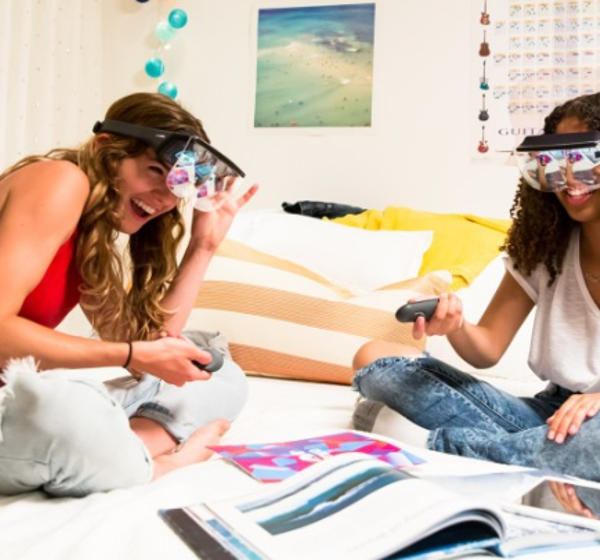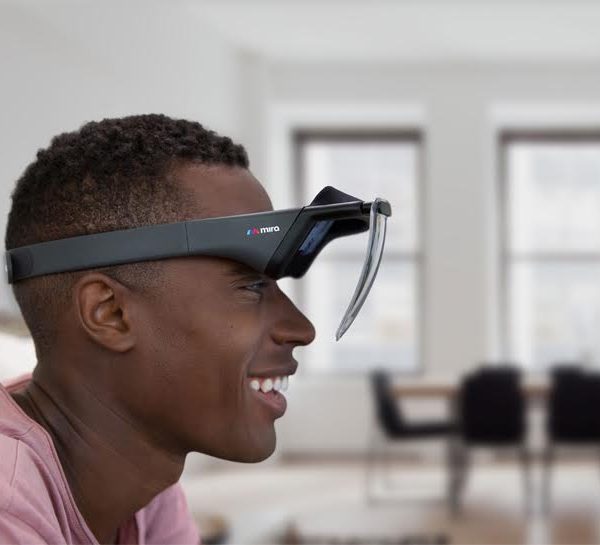
FIRST STARTUP FROM JIMMY LOVINE AND DR. DRE’S USC INNOVATION ACADEMY IS AUGMENTED REALITY FIRM MIRAa
Via LA Times
USC’s much-heralded Jimmy Iovine and Andre Young academy has sprouted its first full-fledged start-up.
Three students are behind Mira, which Tuesday unveils its first product. It resembles a face shield or a large sun visor, except it holds up a smartphone in front of your face. Images from the smartphone are projected onto the shield’s lenses, making it feel as if computer-generated, 3-D objects are floating before you.
Ben Taft, Matt Stern and Montana Reed say the design-centric approach to hardware development instilled in them by USC instructors will help their augmented reality device stand apart from competition from tech giants such as Google and Samsung.
The Mira co-founders are part of the first class at an arts, technology and business program that USC launched in 2014 in partnership with Beats headphones creators Iovine and Young, also known as Dr. Dre.
Taft, Stern and Reed have two semesters left before they graduate. They’re still devising an arrangement with USC to balance on-campus commitments with work at their downtown Los Angeles company.
They hope the device they call Prism becomes an affordable way for consumers to play augmented reality games and watch other entertainment. The $99 hardware is different from virtual reality headsets such as the Samsung Gear VR and Google Cardboard in that Prism doesn’t completely block one’s entire field of view. Two Prism users could play virtual chess and make eye contact, maintaining the liveliness of traditional gameplay. Others could watch the match through a smartphone app, without Prism.
Still, it’s a bulky device that’s short on content and tests the limits of smartphones’ capabilities. But the students join a growing number of technologists who view headsets — and potentially displays that sit on contact lenses — as being a potential successor to smartphones.
“We’re still constrained to a 2-D world as big as our screens,” Stern said. “The ultimate dream is to create a ubiquitous universe, so you don’t have to be limited by the physical constraints of devices.”
Investors that collectively put $1.5 million into Mira include well-known Silicon Valley firm Sequoia Capital, Salesforce Chief Executive Marc Benioff, singer Will.i.am and Troy Capital Partners. A portion of the cash is being paid to production companies to develop apps that work with Mira’s technology.
Mira advisors include Greg Silverman, the former production chief at Warner Bros. Pictures, according to Taft, Mira’s chief executive.
Taft said that USC, Iovine and Dr. Dre do not have stakes in Mira. USC, which provided space and tools for Mira to get started, confirmed that the start-up is the first project consummated within the academy to receive outside funding. This coming school year, the academy is set to grow to 113 students.
Stern, the start-up’s chief operating officer, said he saw the weaknesses of virtual reality during a summer stint at Sony Pictures Entertainment last year. Executives complained that people weren’t spending much time in virtual reality headsets because the activity wasn’t a social experience.
A visor that allows people to continue to see what’s around them ought to be more inviting, Stern concluded. He joined forces with Taft, who interned last summer in the business development department of augmented reality headset maker Daqri.
Turned off by the thousands of dollars it would cost to play around with Microsoft’s HoloLens headset, the students began developing their own technology.
Using USC’s 3-D printers, they made harness prototypes. They cut a handful of $15 fish bowls into lenses. Their design-minded strategy has led them to bring in strangers each Friday to test Prism.
Mira is taking pre-orders for a version that will work with the iPhone models 6, 6S and 7, though the headgear won’t start going out to customers until this fall.
Mira’s technology doesn’t support ARKit, Apple’s developer’s toolbox for making augmented reality apps. But Mira plans to provide instructions to make apps built with ARKit compatible with its own software, which is partially licensed from an undisclosed vendor.
Sigma Worldwide, which makes iPhone cases and other products in China, is manufacturing the Prism. The head visor comes with a remote control game pad. Taft said the $99 price tag includes free access to content on apps that support Mira.

